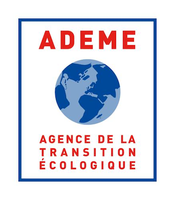Search eceee proceedings
Additional Dwelling Units: Can they finance energy renovation?
Panel: 8. Innovations in products, systems and building technologies
This is a peer-reviewed paper.
Authors:
Migena Sula, Linnaeus University, Sweden
Krushna Mahapatra, Linnaeus University, Sweden
Brijesh Mainali, Linnaeus University, Sweden
Abstract
In Northern Europe, Single Family Housings (SFH) constitute a large share of the total building stock. In Sweden, more than 52% of the population lives in SFH. Most of these houses were built between 1960-80 and are currently needing renovation. Most of these houses are owned by older adults whose kids have moved away, and thus they live in housing over-dimensioned to their needs with a large share of energy consumption for space heating. Furthermore, these facilities are neither elderly-friendly nor energy-efficient, deeming major renovation.
This paper applies a case-study approach to explore options to better utilize and reduce the living area per capita through the generation of Additional Dwellings Unit (ADU) within the existing building stock owned by the elderly. The case study SFH owned by an elderly couple is located in Kronoberg Region, Sweden, and is a typical SFH built during the 1970s. We redesign and restructure the underused space to create an ADU that can be rented out, which in turn may economize the high investment costs of energy-efficient renovation. The energy efficiency renovation measures considered were improvement of the building's climate shell (envelope), extra insulation in the walls and attic, and better performance doors and windows. Energy simulations and life cycle cost assessment of the energy efficiency measures, and space redesign showed that it is possible to reduce energy use by 61% compared to the existing condition of the reference house and a payback time of 59% compared to the application of the energy measures alone. The proposed intervention is aligned with the aging in place strategy, tackling it from a space sufficiency perspective. The proposed intervention reduces the living space per resident by 40% and energy consumption per capita by 62% compared to just the energy renovation of the reference house while creating cash inflows that motivate the houseowner to uptake an energy renovation. The improved energy performance of the building may generate better indoor living conditions for a healthier life for the residents.
Downloads
Download this presentation as pdf: 8-296-22_Sula_pres.pdf
Download this paper as pdf: 8-296-22_Sula.pdf
Panels of
1. Dynamics of consumption: less is more?
2. Efficiency and beyond: innovative energy demand policies
3. Policy, finance and governance
4. Monitoring and evaluation for a wise, just and inclusive transition
5. Towards sustainable and resilient communities
6. Energy-efficient and low-carbon mobility for all
7. Policies and programmes for better buildings
8. Innovations in products, systems and building technologies



























